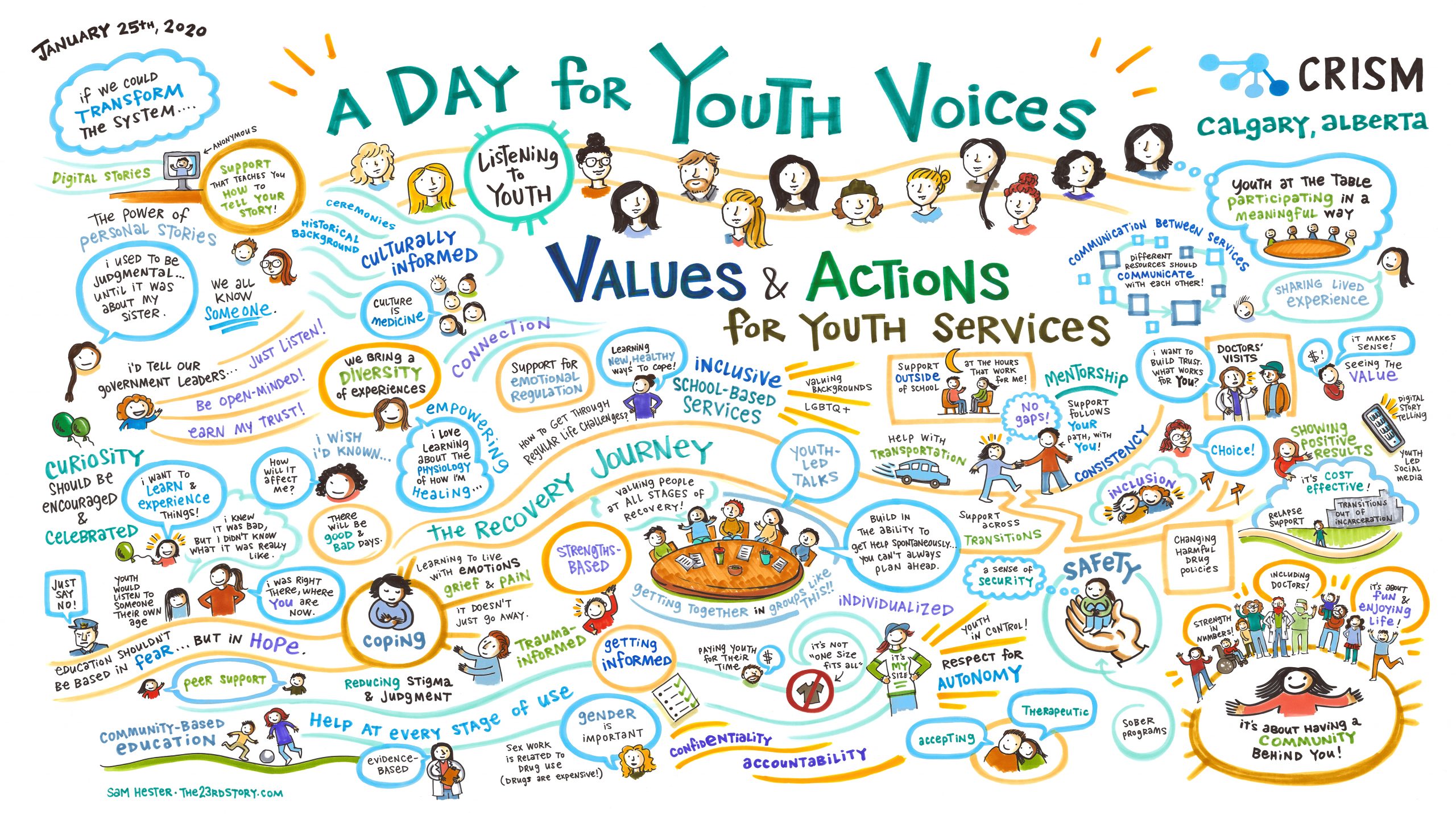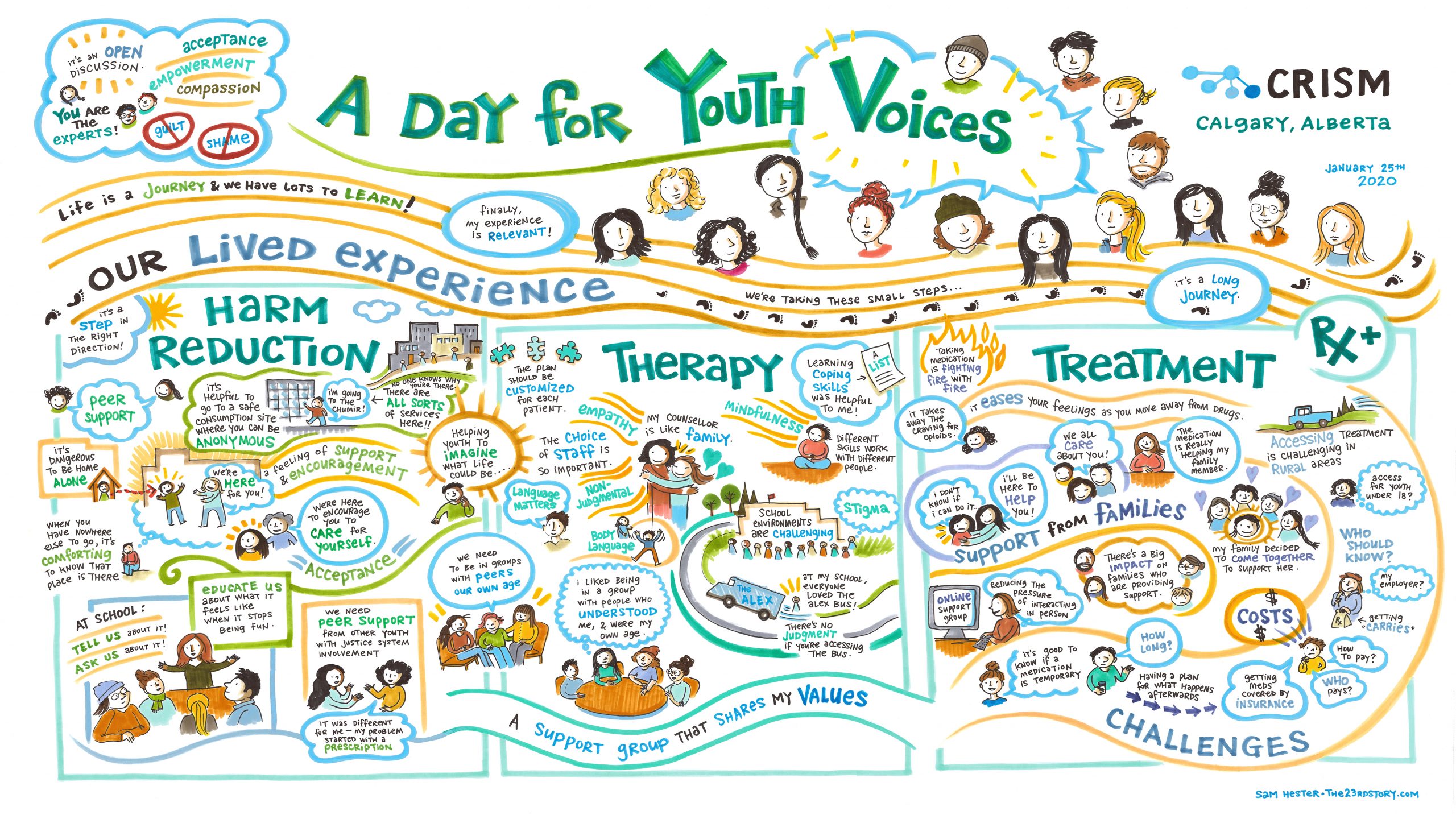
PI: Patricia Conrod (University of Montreal, QC) & Sherry Stewart (Dalhousie University, NS)
Leadership Group: Danya Fast & Rod Knight (BCCSU, BC); Joanna Henderson & Lisa Hawke (CAMH, ON); Rebecca Haines-Saah (University of Calgary, AB)

Objectives
The purpose of this project is to provide additional evidence and develop guidance for the treatment of opioid use disorder among youth and young adults, and help scale-up interventions for youth and young adults to address the opioid emergency.

Project Components
A Scoping Review of the Evidence: Pre-clinical & Clinical Studies for Youth At-Risk of Opioid Use and Addiction
A scoping review of academic and grey literature is completed and has been submitted to the Canadian Journal of Psychiatry.
The review identifies the characteristics of the issue, including key at-risk populations and summarize promising evidence-based intervention strategies for reducing prevalence, transition to misuse, and reducing harm to young people
Critical Gap Analysis: services for opioid dependent youth and family support
Abstracts were submitted and recently accepted in the supplement to the Canadian Journal of Addiction, “An Exploration of Youth, Family & Provider- Identified Solutions to the Canadian Youth Opioid Health Threat”. This is going to be a special edition in CJA, and will include 5-6 papers (one from each site and one common paper).
Youth Focus Groups
In preparation for a national youth summit, youth focus groups will be conducted across each CRISM node. The topic of the focus groups as well as the youth invited will depend on the needs and priorities of each setting in addressing the opioid crisis. This may include: street-entrenched youth; Indigenous youth; youth experimenting with opioids; and youth with family or siblings engaged in opioid use. Objectives include:
- For each youth population, describe the gaps and needs of their population, the services available or accessed, barriers and facilitators of current services and interventions, initiation experience/ first contact with opioids, harm reduction practices, strategies for prevention, harms experienced, and drivers of use,
- Characterize service delivery gaps for specific youth populations,
- Identify successful strategies/ interventions for specific youth populations
Youth Engagement: Youth Summits and Capacity Building
Individual one-day youth summits will be organized at each of the CRISM network nodes. Youth delegates will listen to different presentations on the scientific knowledge available on the current health threat in Canada, and the various evidence-based intervention approaches that hold promise. They will also participate as presenters on their perspectives and needs on 3-4 specific categories of interventions. Youth will then be supported to develop a set of youth-focused guiding principles to inform interventions targeting at-risk youth. These principles will inform the process of developing and/or evaluating interventions in activity 5. There will be continued youth engagement during the project including: interactive dissemination of Summit findings, local node capacity building activities, participation in an advisory committee, and a follow up Youth Summit in year 4.
Alberta Summit January 2020


Knowledge Mobilization and Translation
The resources developed in the activities described above will be disseminated to service providers and key stakeholders to advocate for improvement of youth-specific intervention strategies and youth-specific services across Canada.
